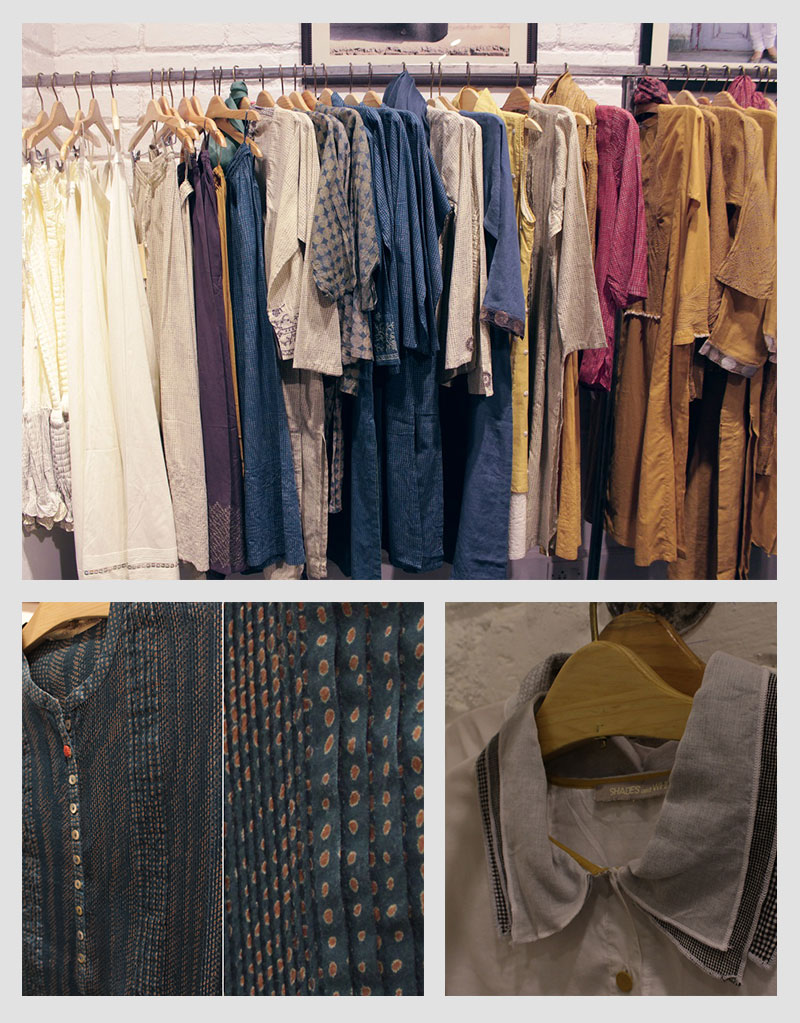Your basket is currently empty!
I often wonder how vibrant brocades, blingy crystals and metallic embroidery have broadly become synonymous with ethnic fashion in India. I have seen innovative revival of myriad of traditional Indian techniques at various Indian fashion weeks for more than six years now and what hit my eyes the most is overdesign. In most scenarios, the designs are screaming on your face for attention. In what seems to be a case of unusual but fundamental alteration in the way ethnic fashion is presented, Shades of India’s latest collection that launched at Amethyst, Chennai got all my attention in ethnic fashion repertoire for it’s minimalist approach. The brand’s design director Mandeep Negi’s tryst with fashion is a far cry from the regular bling struck potpourri. Her ethos goes beyond the bling to suffice everyday fashion sensibilities in mature and sophisticated outlook. When most Indian fashion designers who do ethnic seem to shy away from minimalism, the clothing at Shades of India is a refreshing melange of fine traditional artisanship interpreted with the a minimalist western sensibility. Unlike most ethnic lines that appear to strictly cater to the wedding segment where easy money lies, the collection range at Shades of India deals with everyday cultural and lifestyle needs.
It appears like Mandeep has clearly observed the global Normcore tribe and has dared to interpret the notion into her ethnic collection Oona, which explores the concept of oneness in fine silks, sensual drapes and elegant embroidery. Free flowing tunics and kurtas teamed with palazzo in a subtle and earthy color palette give you a surreal mix of warmth and liberation. Details like stitch lines on brocades, neckline finished with blanket stitch, two stripe fabrics layered in criss-cross direction, raw edges and layered collars in myriad of patterns are quirky and yet wearable. Mandeep’s creations are not for the loudmouth at social gathering who demands attention; it’s for the gracious intellect who commands attention. May be it is with this in mind that the brand shot the lookbook of the Baiyu range with women achievers in field of art, filmmaking, media and social service. Baiyu line is slightly lesser priced than Oona range, drawing inspiration from classic Japanese motifs derived from Sashiko patterns. The clothes have a complimentary colour story of natural, turmeric, coral, jade and ivy blue mixed with metallic hints. Apart from Oona and Baiyu range on display at Amethyst, Shades of India also presented their infamous home furnishing line (where blingy metallics makes appearance with earth neutrals) and handcrafted accessories.
A fashion blogger attends several fashion events. But how often do the designs carry forward in the blogger’s mind once the even concludes? Shades of India’s collection displayed at Amethyst is something I’ll recollect even 5 years down the line in to recite my account on progressive ethnic fashion. Amethyst itself isn’t your regular fashion boutique where mannequins cramp up a yellow lit space. It is a restored British Raj house of the late 19th Century with lush garden, through whose cool, large rooms one can literally waltz through. Both Amethyst and Mandeep’s creations share something in common – they boast a heritage, juxtaposed with contemporary receptivity.
Indian fashion industry had predominantly seen ethnic clothes smeared with phool-patti at every possible congregation of warp and weft. The phenomenon may possibly have a commercial angle since, for an orthodox Indian consumer the ‘designer-ness’ of a garment goes up with count of the crystals and embroidery. In India, somehow the consumer has influenced the designer, instead of what should be the reverse. May be this is where Indian fashion bloggers like myself can do our bit by throwing light on the rigid dichotomy between quantity minded inelegance and quality driven sophistication. The noticeable paradigm shift in combining innovative heritage textiles with quirky aesthetics will redefine the Indian ethnic fashion of tomorrow.
Browse through Shades of India collection in Facebook & Instagram.














Leave a Reply